What are the construction standards in Panama?
JuliAnne Murphy - Panama Pacifico
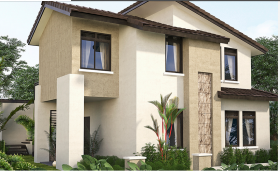 If you're coming from North America, you can expect that the construction standards you'll see in Panama are generally lower than what you see at home. Panama builders build very well in concrete block, and their structures (generally) will last for a very long time, and are structurally sound. What they don't do particular well - or to the standards that North Americans have learned to expect in their home countries - is interior finishes. That's because Panama does not...
If you're coming from North America, you can expect that the construction standards you'll see in Panama are generally lower than what you see at home. Panama builders build very well in concrete block, and their structures (generally) will last for a very long time, and are structurally sound. What they don't do particular well - or to the standards that North Americans have learned to expect in their home countries - is interior finishes. That's because Panama does not... If you're coming from North America, you can expect that the construction standards you'll see in Panama are generally lower than what you see at home. Panama builders build very well in concrete block, and their structures (generally) will last for a very long time, and are structurally sound. What they don't do particular well - or to the standards that North Americans have learned to expect in their home countries - is interior finishes. That's because Panama does not have a skilled labor force related to interior finishes. Currently, there's no specific schooling or training provided for that industry in the country.
If you're coming from North America, you can expect that the construction standards you'll see in Panama are generally lower than what you see at home. Panama builders build very well in concrete block, and their structures (generally) will last for a very long time, and are structurally sound. What they don't do particular well - or to the standards that North Americans have learned to expect in their home countries - is interior finishes. That's because Panama does not have a skilled labor force related to interior finishes. Currently, there's no specific schooling or training provided for that industry in the country. Happily, there are now certain developments - like Panama Pacifico - that are changing the standards in Panama, meaning they are actively mentoring onsite workers on the job to build better. Even so, those new to Panama will definitely notice a difference from what they see at home.
If you can come in knowing that interior finishes will be lower than what you would see at home, and you can expect that that will be the case, you'll be better off. It's safe to assume that even after you move in - no matter where you move in to - there will be some maintenance and fixes that have to take place. This is pretty normal in Panama.
(House in Panama Pacifico development, pictured.)
Posted April 4, 2013
Lourdes Townshend
In any other place in Panamá, construction is regulated by the Housing Ministry. (MIVI). In small towns (perhaps like El Valle and others), maybe regulations are little more flexible than others.
You need blueprints signed by a Panamanian architect or civil engineer, approved by the Municipal Engineer, and as well as by eight organizations like: MIVI, firefighters security office, IDAAN, (water), Public...
In any other place in Panamá, construction is regulated by the Housing Ministry. (MIVI). In small towns (perhaps like El Valle and others), maybe regulations are little more flexible than others.
You need blueprints signed by a Panamanian architect or civil engineer, approved by the Municipal Engineer, and as well as by eight organizations like: MIVI, firefighters security office, IDAAN, (water), Public Works, ANAM (environmental), among others, and must have an environmental study as well. All that takes a lot of time, which sometimes causes frustration.
Not to mention that construction materials has raised in cost a lot lately, because of the boom in this field in Panamá. Is not very easy to find construction workers any more. Sometimes it is a lot easier just to buy a house, and maybe make renovations.
If you want to buy just a piece of land..... make sure the title is cleared... Do not buy "derechos posesorios" ("rights of possession") please.
Posted November 10, 2013
Robert Adams - Retirement Wave
In order to be satisfied as to the construction standards in Panama, you have to talk to local people who’ve used the builders here. If you’re going to build down here, you just don’t walk in and hire somebody. I would go around and talk to people for recommendations, referrals and guidance.
Panama has a big expat community so if you put the question out there, a lot of people will come up with answers on who they hired to do...
In order to be satisfied as to the construction standards in Panama, you have to talk to local people who’ve used the builders here. If you’re going to build down here, you just don’t walk in and hire somebody. I would go around and talk to people for recommendations, referrals and guidance.
Panama has a big expat community so if you put the question out there, a lot of people will come up with answers on who they hired to do this.
You’re going to have to have a good architect and be on top of the project because the standards here are not the same as they are where you’re coming from. It’s not like people in Panama have bad homes or anything. It’s just that in Panama we don’t build the same kind of house that you would build if you were living in the North and people in Panama have been satisfied with simpler housing here in the past, but all of that is changing.
If I were coming down to Panama to live I’d buy an already constructed house. It’s just too much work to build. I would come down initially and either rent or buy a place that I like and then, in two or three years, if I decide to build, I would do it. I wouldn’t come right down and build. You can do it. People do it all the time. But it’s a job. You really have to work at it and be on top of it.
If you’re going to build something, you need to have a permit to build. One thing that is typically required is a Panamanian architect to take a look at the plans and sign off on them. People get away from doing that from time to time. Basically the idea here for the permit is to be sure whatever you’re doing makes sense in Panama and is legal.
This is a very emotional topic for a lot of people. A lot of people have had problems in building homes here, but it’s because they come out on their own and expect everything to work the same way and it doesn’t. Architects here just don’t do building plans. They’re like engineers and are involved in all aspects of building the home. You work with crews and a subcontractor. There are a lot of factors involved.
I wouldn’t move from the United States to France and try to build something right off the bat. It’s not a question of how advanced the country is, but rather it’s getting to know the local community, who does good work and who doesn’t, the problems that other people have faced in that area and how they dealt with them. If you don’t do that, then you will discover the hard way.
I tell people to come down and stay for a while. If they want to build, first come and rent for two or three months and get to know people and talk to them. In 90 days they’re going to know so much more as to whether or not they want to construct and if they do, how to go about doing it. They’re much better off. If they get off the plane looking for land to build a house, I think that’s a very foolish thing to do.
It is possible to have a home built to the highest quality standards you could possibly desire as long as you pay top dollar, just like you would anywhere.
If you want top-notch quality, you have to go to a good architect, a good engineer with the right background, and the right construction people. Then you work out your contract that is very specific relative to the materials that are going to be used and the plans that are going to be followed. Then, you keep on top of it.
Posted November 26, 2014
Gonzalo de la Guardia - Panasurance
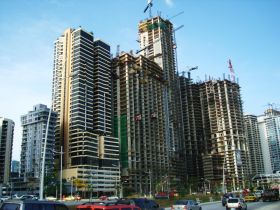 The construction standards here in Panama are not up to US standards. In the US, it is more controlled. We have decent builders here in Panama but some of them might not be as good as others.
The construction standards here in Panama are not up to US standards. In the US, it is more controlled. We have decent builders here in Panama but some of them might not be as good as others. I do hear complaints about finishing. A typical expat would be concerned with good finishing because he knows how it should be done and sometimes it can be disappointing because they do not get what they are used to.
The construction...
 The construction standards here in Panama are not up to US standards. In the US, it is more controlled. We have decent builders here in Panama but some of them might not be as good as others.
The construction standards here in Panama are not up to US standards. In the US, it is more controlled. We have decent builders here in Panama but some of them might not be as good as others. I do hear complaints about finishing. A typical expat would be concerned with good finishing because he knows how it should be done and sometimes it can be disappointing because they do not get what they are used to.
The construction standard here in Panama depends on who your builder is. There are builders who are at par with US standards. I just would not buy a property without looking at it. We have a lot of buildings here in Panama that are 70 feet high and they are still standing, so they are well-built. It is just the finishing that some people complain about because it is not what they expected.
Posted November 27, 2014
Bill Hamilton - Bill Hamilton
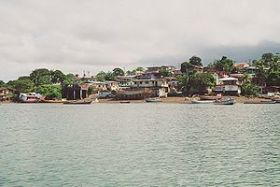
They have construction standards in Panama but they’re not very strict. No one checks.
In the United States, a homeowner can have an expectation that whatever’s being built meets certain standards because the government comes in and checks. In Panama, don’t expect anybody to check. The best thing you can do is have a house built and be on the site yourself so that you can check everything.
...

They have construction standards in Panama but they’re not very strict. No one checks.
In the United States, a homeowner can have an expectation that whatever’s being built meets certain standards because the government comes in and checks. In Panama, don’t expect anybody to check. The best thing you can do is have a house built and be on the site yourself so that you can check everything.
To do this, you have to have a bit of knowledge of construction. You need to know what sort of mixes are put in the cement and the sand. Fortunately, our family has an architect in it.
If there is someone from the United States who does not have any background in construction and wants to build a $65,000, 1,600 square foot Panamanian house and is not willing to be on site, he can always hire someone. In Panama, they can hire what is known as a “technical architect” who actually goes on site to ensure that everything is being done correctly.
You have to look at the price difference between the cost of an American built house and a Panamanian one. If you opt to have the Panamanian house built and it costs you a couple of grand to have someone on site while it is being built, fine. I met this guy in Panama whose family is Spanish. He supervises the construction with his own crew and guarantees that it is finished for occupation in three months. He does this for $1,500 monthly. If he's not finished in 3 months, then there's no payment.
Technical architects just supervise the construction. They would advise on the materials to be used for special circumstances. They’re on site to make sure that the construction is done as per the specifications. For instance, they check where they lay the foundations, make sure that the mix is correct, the reinforcement is correct, the dents. Then they check the first walls, plumbing, electricity installation, everything. They work in conjunction with the architect.
(Houses in the Balboa district, which is offshore from the mainland of Panama, pictured.)
Posted February 3, 2015
Michael A. Martinez - B & B Real Estate Nicaragua / Panama Real Estate Information
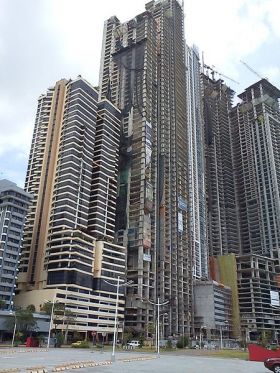 For most of the country of Panama, the number one way to construct a building is with beams and cement and block walls. A lot of people are using aluminum beams for the roof, with a plastic or synthetic red tile look. Some are more expensive than others. But I think for the most part, it is synthetic plastic that looks like a faux red Spanish tile. That is the basic construction cost here in Panama. Using a contractor, this can be built with US $50 per square foot. The...
For most of the country of Panama, the number one way to construct a building is with beams and cement and block walls. A lot of people are using aluminum beams for the roof, with a plastic or synthetic red tile look. Some are more expensive than others. But I think for the most part, it is synthetic plastic that looks like a faux red Spanish tile. That is the basic construction cost here in Panama. Using a contractor, this can be built with US $50 per square foot. The... For most of the country of Panama, the number one way to construct a building is with beams and cement and block walls. A lot of people are using aluminum beams for the roof, with a plastic or synthetic red tile look. Some are more expensive than others. But I think for the most part, it is synthetic plastic that looks like a faux red Spanish tile. That is the basic construction cost here in Panama. Using a contractor, this can be built with US $50 per square foot. The transportation of materials is what is really expensive here.
For most of the country of Panama, the number one way to construct a building is with beams and cement and block walls. A lot of people are using aluminum beams for the roof, with a plastic or synthetic red tile look. Some are more expensive than others. But I think for the most part, it is synthetic plastic that looks like a faux red Spanish tile. That is the basic construction cost here in Panama. Using a contractor, this can be built with US $50 per square foot. The transportation of materials is what is really expensive here. If you are going to buy an old Panamanian house, it is going to be concrete with wrought iron columns with blocks. Many Panamanian homes do not have windows. They use decorative blocks as their window areas. They are blocks that have designs in them and some of them are even screened in. That would be the basic level. The next level up would be windows on that block house with screens.
In the last ten years with all the expats coming, the expats want American-style buildings, so we have that here. We have beautiful buildings here. One of the good things here in Panama is that there is a lot of wood. There is a lot of wood workers and furniture builders and it is incredibly cheap to have beautiful cabinets in your kitchens and your dens and offices at a very good price, which is a lot lower than what it would cost you in the States.
The construction standards are dictated by the cost that you are paying for the house. The contractors here are knowledgeable. They have contracted for both Americans and Panamanians. They can do anything, like install granite countertops. The houses they make are earthquake proof.
We use engineered structured construction that is signed off by a licensed engineer ad architect. You have to have those signed to get a building permit. We have rules and regulations. If you want to go up and build your own bamboo house up in the hills, no one is coming after you. And if they do, they will tell you of a $50 building permit, and nobody is going to question you. If you are going to buy a lot, you can easily find a contractor and easily he can follow your American engineered plans and you can get signed by a local engineer here or architect and get a permit and build to the standards of anywhere you desire.
One of our projects, Colores de Pacific, which is on a private beach here, is built like Fort Knox, with iron girded beams. It is built 10 feet above the ground in the middle of the trees. It is the most expensive construction I have ever seen, but it is also one of the most beautiful projects I have seen.
Overall, you can get a very basic house that probably would not pass American construction standards on a used 20-year old house or you can buy a brand new house with building standards like something you would find in Malibu or in Palm Beach. It depends on the price point you are looking for.
Posted February 25, 2015
Jonathan Stolarz - COSTA LINDA RESIDENCE CLUB
 In Panama, you need to ask for a permit before doing a development. It is not easy to get permits; in fact, some people complain it takes too long to get one.
In Panama, you need to ask for a permit before doing a development. It is not easy to get permits; in fact, some people complain it takes too long to get one. In the United States when you build a house, the government will come out at various points along the way to make sure that the electrical is done properly, that it’s up to code, there are permits, etc. The same thing is done in Panama-- the government comes in to check in the middle of the...
 In Panama, you need to ask for a permit before doing a development. It is not easy to get permits; in fact, some people complain it takes too long to get one.
In Panama, you need to ask for a permit before doing a development. It is not easy to get permits; in fact, some people complain it takes too long to get one. In the United States when you build a house, the government will come out at various points along the way to make sure that the electrical is done properly, that it’s up to code, there are permits, etc. The same thing is done in Panama-- the government comes in to check in the middle of the construction and upon completion of the construction.
Even if an investor wouldn’t be there physically to watch his house being built, he would still feel confident that the house would be built to a North American standard or European standard because of the permits and the inspection process done by the government.
(The master planned community of Costa Linda outside of Panama City, Panama, pictured.)
Posted August 5, 2015
Iván Eskildsen - Cubitá Group
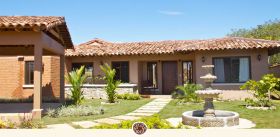 In general, foreigners such as North Americans are very satisfied with the construction standards in Panama homes and apartments, including the finishings and the social areas where people spend most of their time to relax.
In general, foreigners such as North Americans are very satisfied with the construction standards in Panama homes and apartments, including the finishings and the social areas where people spend most of their time to relax. I used to be the CFO for Grupo Verdeazul, a development group that, among other activities, developed high-end projects in Panama such as Buenaventura (in the Coronado area), and the Bristol Hotels. As a result of my experiences there,...
 In general, foreigners such as North Americans are very satisfied with the construction standards in Panama homes and apartments, including the finishings and the social areas where people spend most of their time to relax.
In general, foreigners such as North Americans are very satisfied with the construction standards in Panama homes and apartments, including the finishings and the social areas where people spend most of their time to relax. I used to be the CFO for Grupo Verdeazul, a development group that, among other activities, developed high-end projects in Panama such as Buenaventura (in the Coronado area), and the Bristol Hotels. As a result of my experiences there, I became familiarized with the highest standards in Panama for homes and hotels, which are consistent with the highest international standards.
In the central provinces of Panama, like here in Chitré, the standards are usually a bit lower than in Panama City. In contrast with the local standards, we wanted our Cubitá development project here in Chitré to be above the standard of all the projects in the area and more consistent with what people would expect in Panama City. (Chitré is about 160 miles west of Panama City and 110 miles west of Coronado, at the northwest corner of the Azuero Peninsula. From Chitré, you could get to Pedasi, which is at the far southwest corner of the Azuero Peninsula, in about an hour and twenty minutes by car.)
The standards in “the provinces” (those areas away from Panama City) are in general in line with much simpler construction and finishes, with the exception of certain beach areas (generally around Coronado) were, for example, Buenaventura is located, or Pedasi, which have marketed towards the international clients for years now. In contrast, in Chitré or Santiago or other medium sized cities in Panama, there aren't very many high standard home or hotel projects.
Before a development can go through the construction permitting process, they have to comply with the zoning regulations. In Panama in general and even here in Chitré, the trend is to require much more formal compliance with regard to what type of construction can be done in particular areas. Zoning requirements have come a long way in Panama, to the point where foreigners can be comfortable with the process and the outcome. As the years have gone by, Panama has become stricter. However, it's always useful for foreigners to become familiarized with the local laws and requirements so they can compare to their own standard.
Regarding permitting and government inspections, Panama has moved a long way towards a more formalized process and one that a North American would be more accustomed to seeing. It is very common that projects in Panama have to go through to all the legal requirements with regards to construction permits and occupation permits.
(Single family home in the Cubita Development, Chitre, Panama, pictured.)
Posted August 13, 2015
David Btesh - Pacific Realty / Pacific Developers
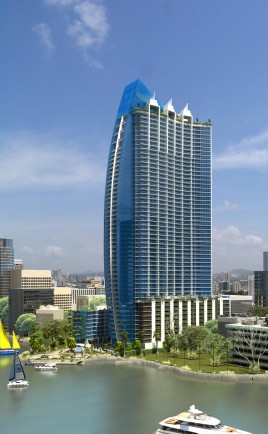 Panama has construction regulations that are as strong as the regulations of construction in the USA. As just one example, we build to seismic standards even though we are not in a seismic zone.
Panama has construction regulations that are as strong as the regulations of construction in the USA. As just one example, we build to seismic standards even though we are not in a seismic zone. The construction here in Panama is iron and steel. We don’t use inside gypsum and board so if you build a building in compliance with the extremely rigid fire codes we have now and an apartment in that building catches on fire, only that apartment will burn, as opposed...
 Panama has construction regulations that are as strong as the regulations of construction in the USA. As just one example, we build to seismic standards even though we are not in a seismic zone.
Panama has construction regulations that are as strong as the regulations of construction in the USA. As just one example, we build to seismic standards even though we are not in a seismic zone. The construction here in Panama is iron and steel. We don’t use inside gypsum and board so if you build a building in compliance with the extremely rigid fire codes we have now and an apartment in that building catches on fire, only that apartment will burn, as opposed to the entire building. Maybe the curtains and furniture and the carpet will burn but the whole building is made of cement, steel, and glass, so there are no building-wide fires in Panama.
The construction permitting process includes approval by the fire department, the people who decide if the building is safe, and many others. These are all government offices and each one studies the building for a couple of weeks. The seismic foundations, drawings, and the sprinkler systems all go through a process and they are very strict about that.
There is also the question of zoning. In addition to other considerations, zoning is concerned with how many people per hectare can occupy your building, which is something you need to know beforehand in order to determine how big you can build a building. If it’s less people per hectare then you can only go up a certain quantity of floors. The parking is also part of the construction. You have to consider setting up parking for the people who are going to live in your building or who will walk in the building and the government here in Panama is getting very strict on that. These types of things are very good for the country because they cause the roads to get unclogged.
(Grand Tower, a residential complex by Pacific Developers, Punta Pacifica, Panama City, Panama , pictured.)
Posted October 23, 2015
Jeff Barton
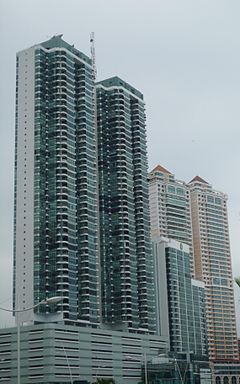 The construction standards in Panama can vary dramatically based on the location of the construction and which builder is used. When you’re looking at properties that are on the beach or that are in the highlands or in faraway places from Panama City, a lot of the standards can be dramatically less than the luxury high-rises that would be in the heart of the city, for example in the neighborhoods like Punta Pacifica, that are considered the pinnacle for quality...
The construction standards in Panama can vary dramatically based on the location of the construction and which builder is used. When you’re looking at properties that are on the beach or that are in the highlands or in faraway places from Panama City, a lot of the standards can be dramatically less than the luxury high-rises that would be in the heart of the city, for example in the neighborhoods like Punta Pacifica, that are considered the pinnacle for quality... The construction standards in Panama can vary dramatically based on the location of the construction and which builder is used. When you’re looking at properties that are on the beach or that are in the highlands or in faraway places from Panama City, a lot of the standards can be dramatically less than the luxury high-rises that would be in the heart of the city, for example in the neighborhoods like Punta Pacifica, that are considered the pinnacle for quality construction. Like anywhere in the world, it is important to do your due diligence and know who the builder is and their reputation.
The construction standards in Panama can vary dramatically based on the location of the construction and which builder is used. When you’re looking at properties that are on the beach or that are in the highlands or in faraway places from Panama City, a lot of the standards can be dramatically less than the luxury high-rises that would be in the heart of the city, for example in the neighborhoods like Punta Pacifica, that are considered the pinnacle for quality construction. Like anywhere in the world, it is important to do your due diligence and know who the builder is and their reputation. (The twin buildings of Miramar Towers were once the tallest in Panama City, Panama, pictured.)
Posted December 26, 2015
Kathya de Chong - Alto Boquete Condominios
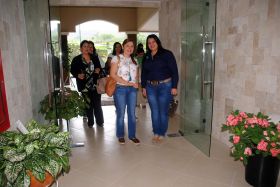 The construction standards in Panama are very different from the construction standards in the US. Construction in Panama is regulated by law and becomes more particular in some areas of the country. In developing houses, townhouses or buildings in Panama, the capacity of the area should always be considered.
The construction standards in Panama are very different from the construction standards in the US. Construction in Panama is regulated by law and becomes more particular in some areas of the country. In developing houses, townhouses or buildings in Panama, the capacity of the area should always be considered. For example, in Boquete, you cannot build high-rises, which is the standard of the area. In Panama City, on the other hand, you may have...
 The construction standards in Panama are very different from the construction standards in the US. Construction in Panama is regulated by law and becomes more particular in some areas of the country. In developing houses, townhouses or buildings in Panama, the capacity of the area should always be considered.
The construction standards in Panama are very different from the construction standards in the US. Construction in Panama is regulated by law and becomes more particular in some areas of the country. In developing houses, townhouses or buildings in Panama, the capacity of the area should always be considered. For example, in Boquete, you cannot build high-rises, which is the standard of the area. In Panama City, on the other hand, you may have a lot of buildings in a small area. There are different standards in different regions of Panama.
Unfortunately, whether or not the houses in Panama are well built depends on the price range. I say “unfortunately” because construction standards should be better for everyone in Panama, but when you see the projects or the investments from buyers with a lower budget, you will see that the construction is not based on good standards. On the other hand, if you are willing to buy properties in Panama worth over $500,000, the quality will be a lot better. It works depending on the amount of money you are investing on a property.
Before buying a home in a new development in Panama, you need to know about the construction company first. That includes its history- if they have finished other projects and the quality of construction that they are offering. Look to the reputation and the history of the developer to see if they’ve done this type of thing in the past and if they’ve been successful.
In the past, most of the projects in Panama had big companies backing the project. That means you’ll feel more comfortable in a company that has already developed good projects in the past, instead of the new ones with no background yet.
When buying a property here in Panama, you need to make sure it is titled and that everything should be in order so that you can make sure you’re buying a property that you will have legal possession of. You have to make sure you’re purchasing something that legally exists in such a way that it can be sold.
(Alto Boquete Condominios, Boquete, Panama, pictured.)
Posted August 2, 2017
lars forsberg - Longboat Retirement
The construction standards in Panama are all over the map. The residential construction style is usually concrete and steel. Generally speaking, walls are concrete block, finished with rapello, then painted. The rapello is basically a smooth stucco finish. The concrete is then painted. I have included a short video of me and a couple locals painting my house near Volcan in Chiriqui. In the video you can see the surface treatment of my house as...
The construction standards in Panama are all over the map. The residential construction style is usually concrete and steel. Generally speaking, walls are concrete block, finished with rapello, then painted. The rapello is basically a smooth stucco finish. The concrete is then painted. I have included a short video of me and a couple locals painting my house near Volcan in Chiriqui. In the video you can see the surface treatment of my house as well as my neighbors'.
Posted January 15, 2018
Ray Davis
I find it humorous that most of the comments here are from people with a vested interest in either building or selling real estate here in Panama and while they are telling you about the materials used they fail to tell you how shoddy the construction is here. All the new high rises along Avenida Balboa the main drag are disasters.
I know. I live in one.
I came here like many others to retire in peace but have been fighting a nightmare for 10 years. As I write...
I find it humorous that most of the comments here are from people with a vested interest in either building or selling real estate here in Panama and while they are telling you about the materials used they fail to tell you how shoddy the construction is here. All the new high rises along Avenida Balboa the main drag are disasters.
I know. I live in one.
I came here like many others to retire in peace but have been fighting a nightmare for 10 years. As I write this I have had leaks in my apartment for over 2 1/2 YEARS. The mold has killed my dog. Two of the leaks are from la light fixture and a light switch. I paid 100 dollars in June for the fire dept. to come and inspect. I have returned there 5 times to beg them to come and stop this fire hazard. They still have not come and this is September almost October and if a fire starts they don't have the equipment ot fight a high rise fire.
I have been to the ministry of health .....nothing. The administration of the building has told me in well over 100 conversations they will force the apartment above me to fix the problem but still not fixed.
Posted September 27, 2019


